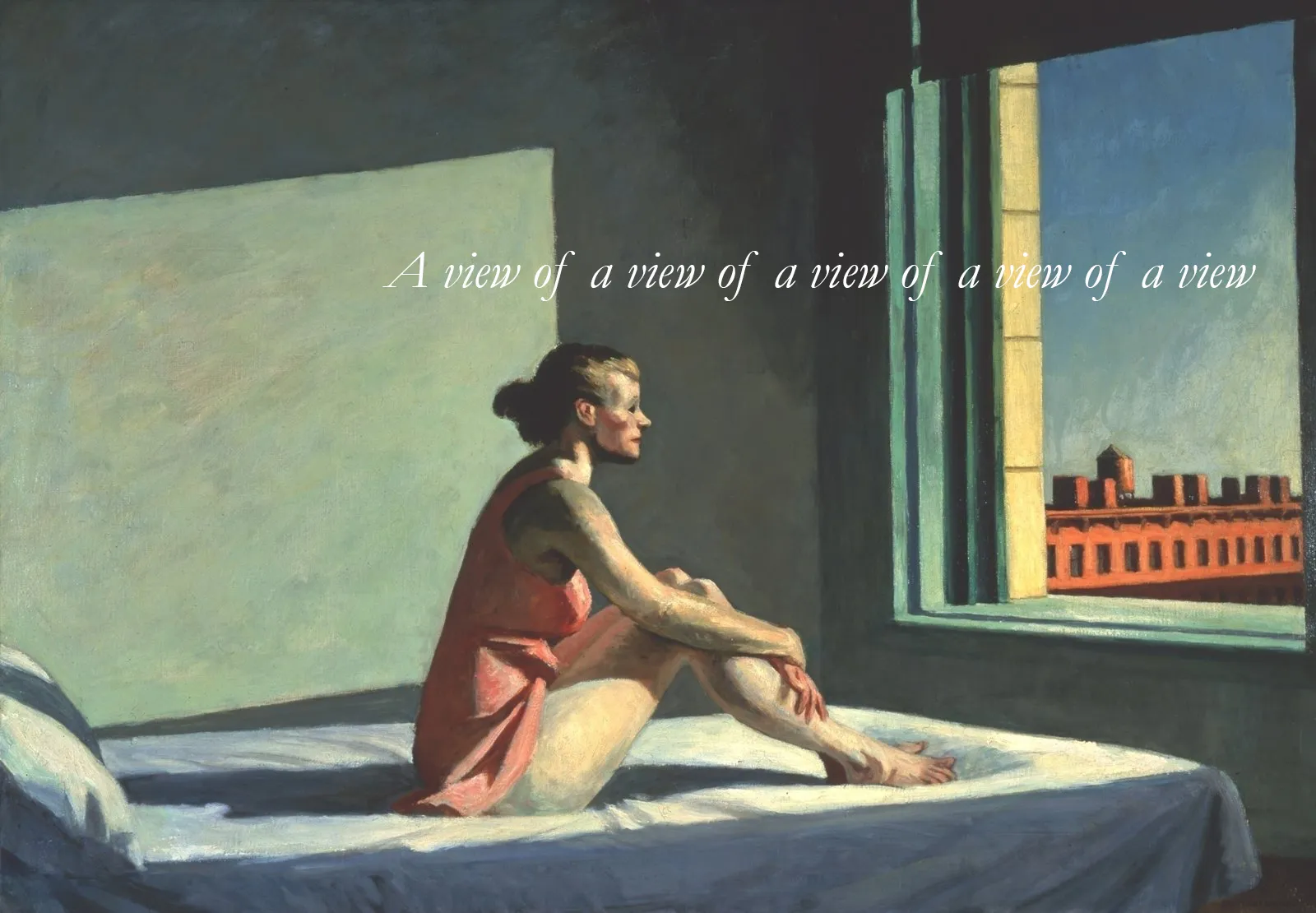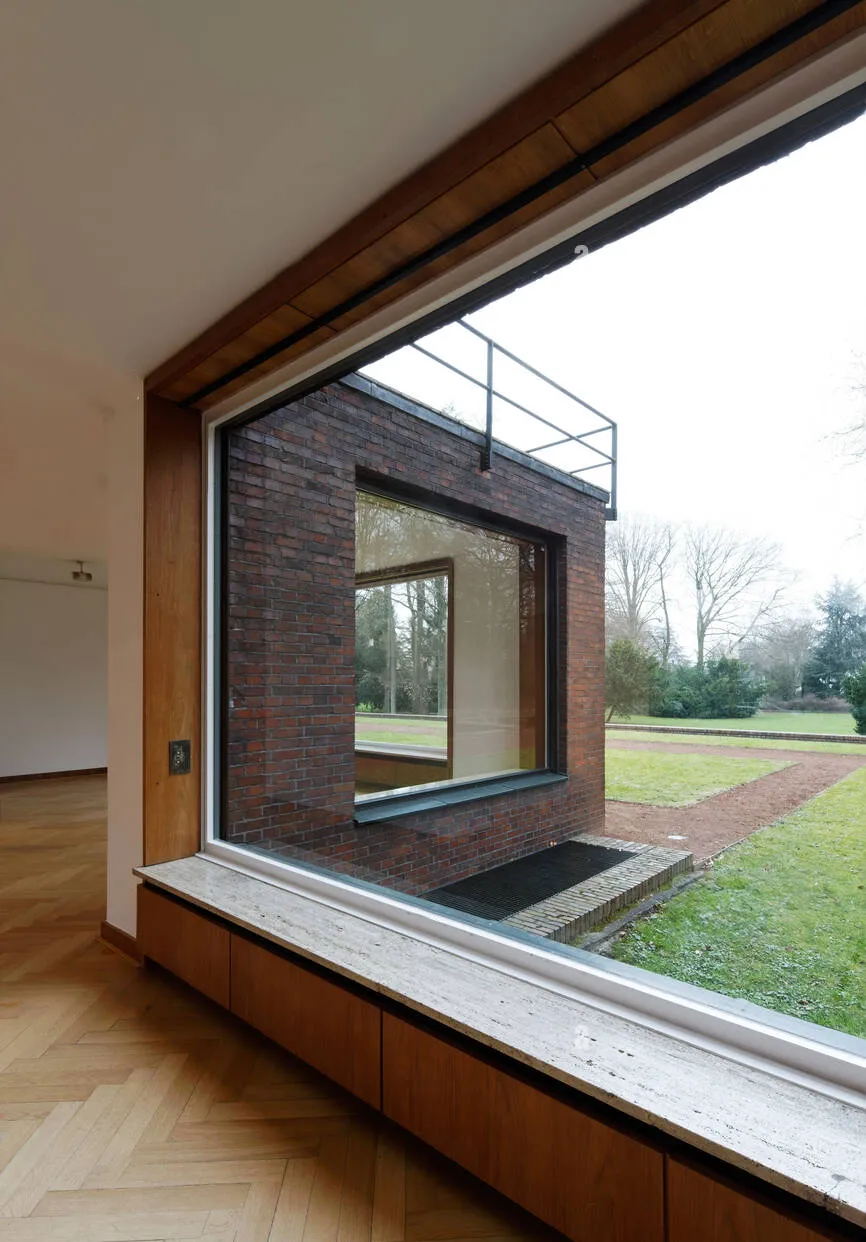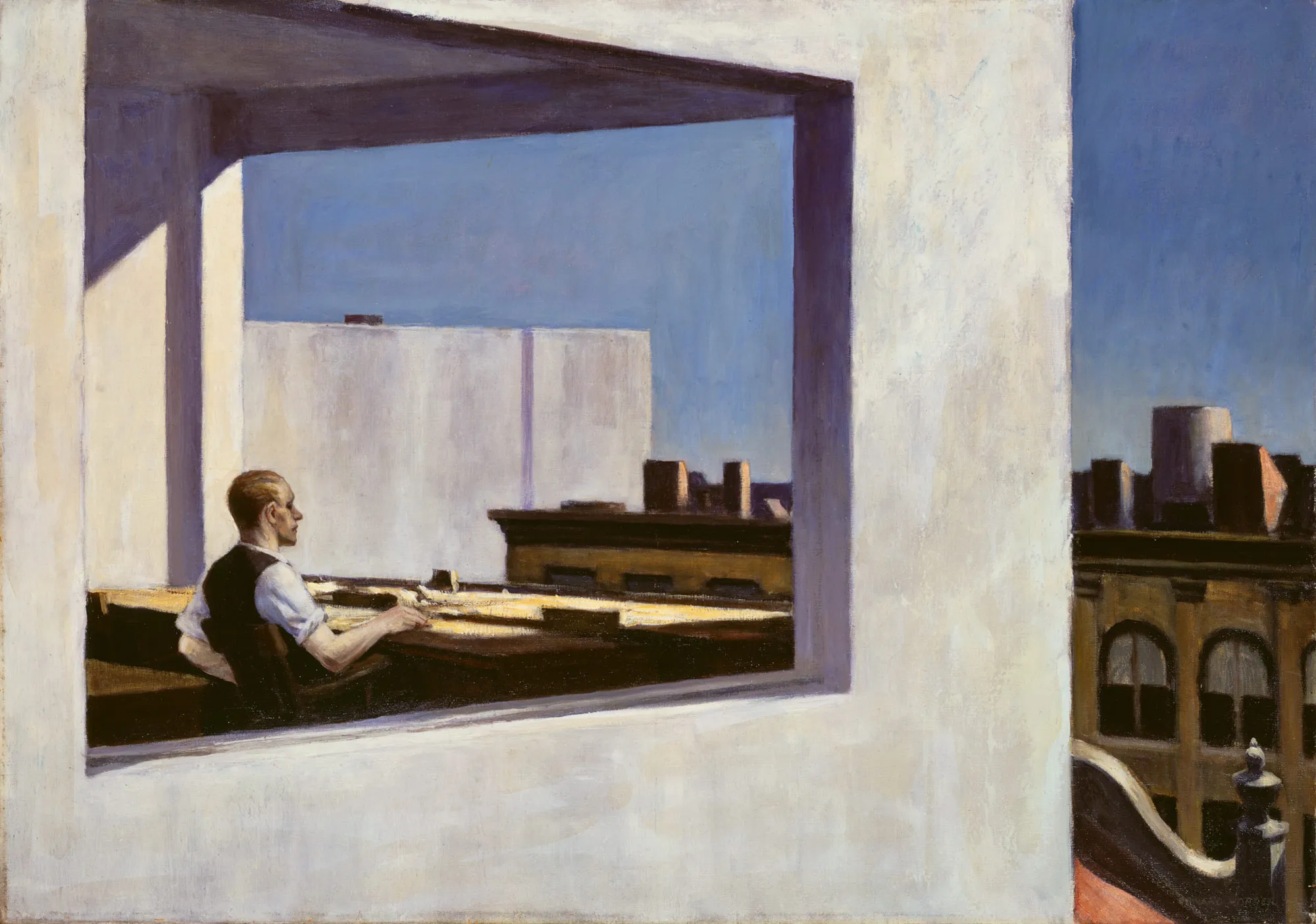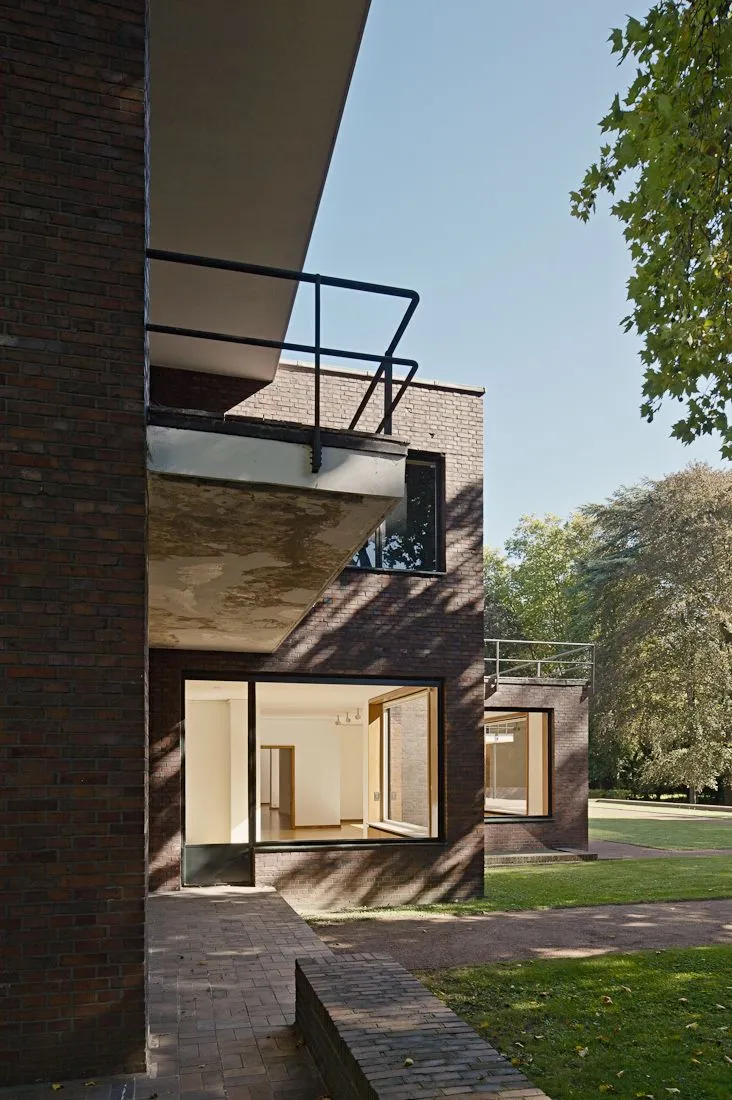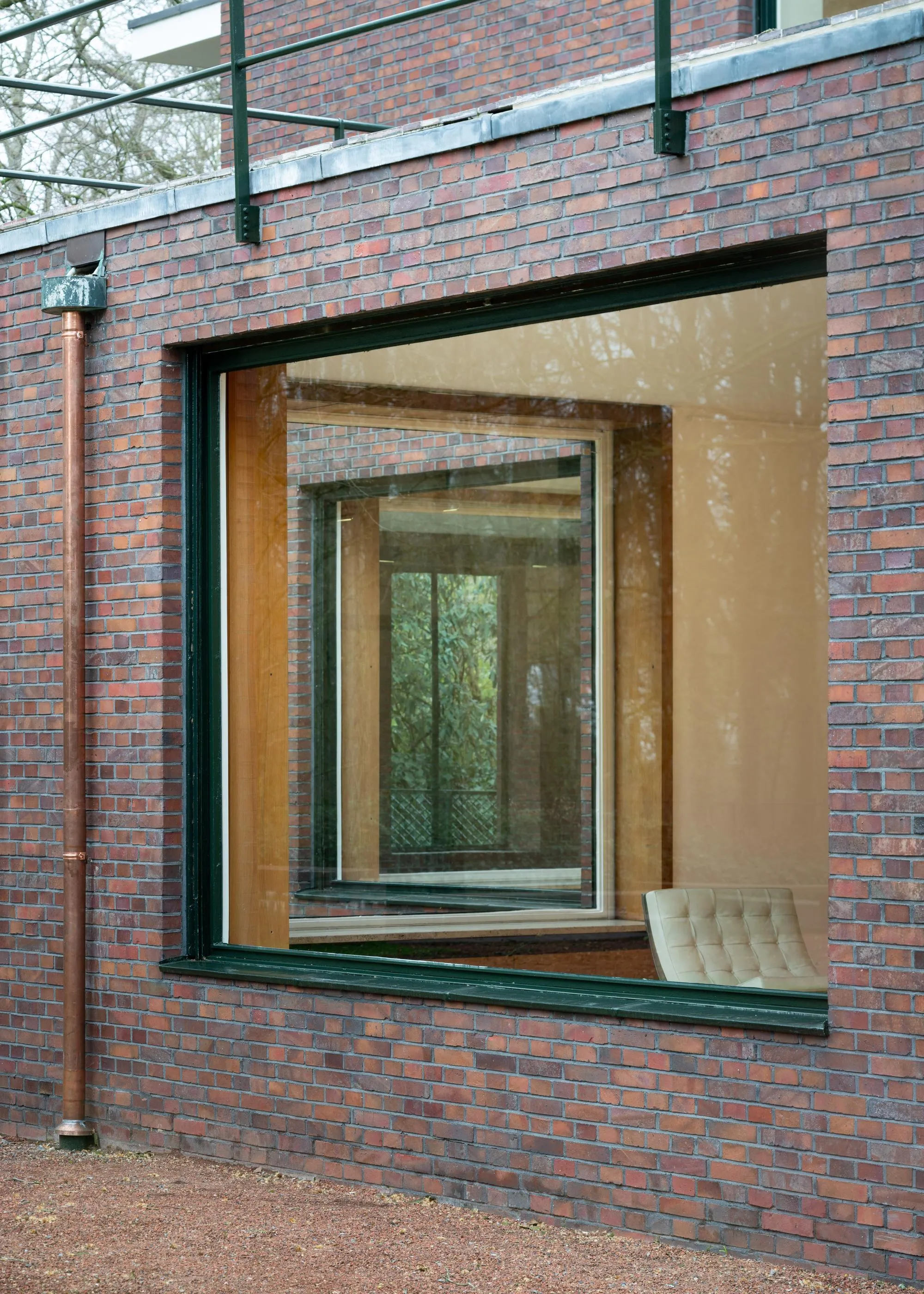A view of a view of a view of a view of a view
Looking at Hopper’s paintings, you are either immersed in moments that are forever suspended between a before and an after or you immerse in an attempt to “maintain the pretense of an orderly reality that is capable of representation, a reality such as the individual has long since ceased to experience.”
There is almost no glass in Hopper’s work. The window is dematerialized into a frame which creates the possibility of another existence outside their own. It’s as if the fenestration is outfitted with motorized mechanisms that lower the glass into basement. This brave idea was perhaps the only solution to a problem which Mies had created for himself. He later went to dismissively say: “I wanted to make this house (Haus Lange) much more in glass, but the client did not like that. I had great trouble.”
Apart from Mies willingly not publishing the Krefeld Villas throughout his life, the client was so happy with the design that he commissioned him for six other projects and possibly the connection that gave him the commission to design the German Pavilion in Barcelona. “This circumstance has caused some to imagine that Mies either compromised excessively, or willingly subdued his avantgarde aspirations to please an important client.” What is true is the outstanding ability of Mies to “exercise his modernity at the scale of the room, the doorway, the window, the wall, the brick.”
I believe there is no relation whatsoever between Mies and Hopper. But what is worth of speculating or even making connection, is the possibility of the way how one looks through or at a window. For Hopper the window vanishes, for Mies is the separation of viewer from the view. While the later is not interested in suspense or in the idea that houses, like people, can be penetrated with a gaze, he imposes self-awareness by creating an architecture which folds back onto itself. As most of his contemporaries he could have used the corner window but instead he employs zigzagging window wall where the solid corners function not as bearing points, but as hinges at the folds. The resulting view is not perpendicular to the window frame but oblique to the glazed surface.
“A view of a view of a view of a view of a view of the garden: can one really call this a view of the garden?” Later Mies went on to use the same tricks on other projects, but he never used the window in the same way. As Hopper dematerialized the window, he dematerialized architecture to beinahe nichts.
Andi Arifaj,
July 2023
Kleinman, Duzer. 2005. Mies van der Rohe The Krefled Villas. New York: Princeton Architectural Press
Tegethoff. 1985. Mies van der Rohe, The Villas and Country Houses. Cambridge: The MIT Press
Gunter. 1990. Hopper 1882-1967 Transformation of the Real. Köln: Taschen
The Mies van der Rohe Archive, The Museum of Modern Art, New York
https://www.atlasofplaces.com/painting/aesthetics-of-alienation/
Evan Puschak. 2015. Hopper's Nighthawks: Look Through The Window
All images used in this research are the property of their respective owners. We do not claim any ownership or rights to these images. All rights are reserved by the original creators.
